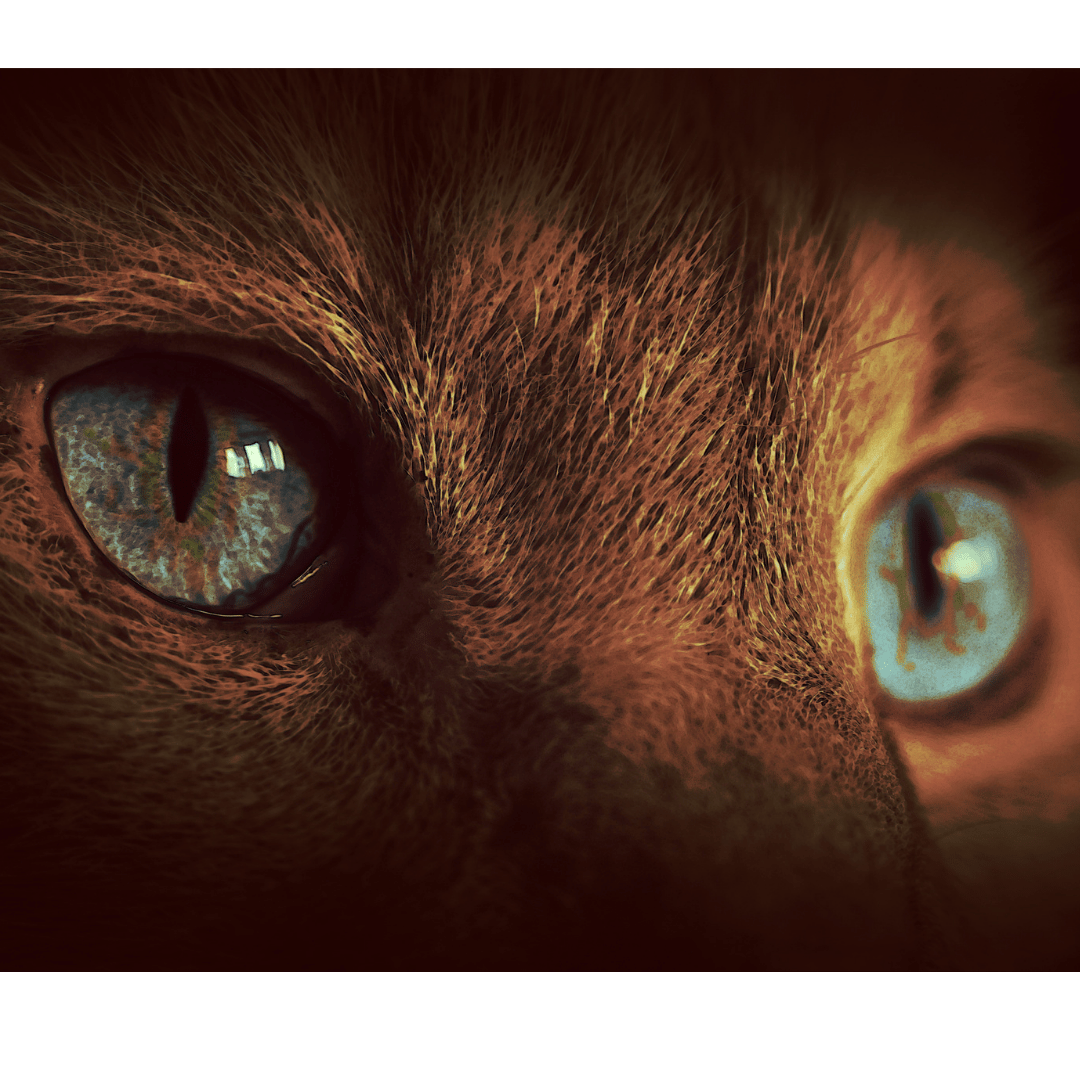Eye Care for Cats: A Complete Guide to Feline Eye Health
Introduction
Your cat’s eyes are not just beautiful; they are essential for their survival, communication, and navigation. However, many cat owners overlook eye health, leading to preventable vision problems.
In this guide, we’ll cover everything you need to know about keeping your feline’s eyes healthy, spotting common issues, and knowing when to seek veterinary care.
🔎 Understanding a Cat’s Eyes
Unique Anatomical Features of Feline Eyes
Cats have evolved to be exceptional night hunters, thanks to:
✔️ Large pupils that dilate for more light intake✔️ A tapetum lucidum, a reflective layer that enhances night vision✔️ Specialized retina cells that detect motion more efficiently than humans
How a Cat’s Vision Differs from Humans
🐾 Cats see fewer colors than humans, primarily shades of blue and green.🐾 Their vision is sharper in dim light but lacks fine detail.
Why Do Cat Eyes Glow in the Dark?
The tapetum lucidum reflects light, creating that eerie glow in the dark. This adaptation helps them hunt in low-light environments.
✔️ Signs of Healthy Eyes in Cats
A cat’s eyes should be:
✅ Bright and clear✅ Free from redness or swelling✅ Even pupil size and reaction to light✅ No excessive blinking or squinting
⚠️ Red flags include: excessive tearing, cloudiness, and sensitivity to light.
🚨 Common Eye Problems in Cats
1. Conjunctivitis ("Pink Eye")
Symptoms: Redness, watery discharge, swollen eyelids
Causes: Infections, allergens, or irritants
Treatment: Prescription eye drops
2. Corneal Ulcers
Symptoms: Cloudy eye, excessive blinking
Causes: Scratches, dry eyes, infections
Treatment: Antibiotics, sometimes surgery
3. Glaucoma
Symptoms: Bulging eye, tearing, possible blindness
Causes: Increased eye pressure
Treatment: Medication, surgery
4. Cataracts
Symptoms: Milky or cloudy lens
Causes: Aging, diabetes
Treatment: Surgery in severe cases
5. Uveitis
Symptoms: Pain, red eye, sensitivity to light
Causes: Infections, immune disorders
Treatment: Anti-inflammatory drops
⚡ Causes of Eye Issues in Cats
🚫 Viral & Bacterial Infections (Herpesvirus, Chlamydia)🚫 Allergies & Environmental Irritants (Dust, smoke, pollen)🚫 Trauma & Scratches (Cat fights, rough play)🚫 Genetic Predisposition (Certain breeds are prone to eye issues)
If your cat frequently rubs their eyes or squints, schedule a vet visit.
🧐 How to Examine Your Cat’s Eyes at Home
✔️ Look for redness & swelling✔️ Check for watery or pus-like discharge✔️ Observe for unequal pupil size
If you see anything unusual, consult a veterinarian ASAP.
🛡️ Preventative Eye Care for Cats
1. Routine Cleaning
Use a damp cotton pad and saline solution
Gently wipe from the inner corner outward
2. Nutrition & Supplements
Taurine: Essential for retinal health
Vitamin A: Supports night vision
Omega-3 fatty acids: Reduce inflammation
3. Vet Check-Ups
Annual eye exams help catch issues early before they become severe.
📌 How to Clean Your Cat’s Eyes
✅ Do’s:
✔️ Use vet-approved saline solution✔️ Clean gently with soft pads
❌ Don’ts:
✖️ Never use human eye drops✖️ Avoid harsh chemicals like hydrogen peroxide
⏳ When to See a Veterinarian
🚨 Emergency Symptoms:⚠️ Sudden vision loss⚠️ Heavy green/yellow discharge⚠️ Excessive squinting or scratching at the eye
If your cat displays these symptoms, seek urgent veterinary care.
🐱 Breeds Prone to Eye Problems
Certain breeds have a higher risk of eye conditions:
🐾 Persians & Himalayans – Prone to tear staining & entropion🐾 Siamese & Burmese – Higher risk of glaucoma & cataracts🐾 Scottish Folds – Increased likelihood of eye infections
If you own one of these breeds, routine eye care is even more crucial.
🚑 First Aid for Eye Injuries
Minor Eye Injuries
🩹 Flush with sterile saline🩹 Keep your cat calm and prevent scratching
Serious Eye Trauma
🚨 If you see blood, bulging, or pus, visit an emergency vet immediately.
👀 Behavioral Signs of Vision Problems
🐾 Clumsiness – Bumping into furniture🐾 Reluctance to Jump – Hesitant with heights🐾 Sudden Aggression – Easily startled
These could indicate vision loss—get your cat checked ASAP.
🔬 The Future of Feline Eye Care
Veterinary medicine is rapidly evolving, with new treatments including:
🌟 Gene Therapy & Stem Cell Treatments🌟 New Non-Surgical Treatments for Glaucoma🌟 Advanced Cataract Surgery Techniques
📢 Conclusion
A proactive approach to eye care can prevent serious health issues and ensure your cat enjoys a lifetime of clear vision.
🛒 Shop our Lickable Puree Supplements for optimal vision support!
💬 Have a question? Drop a comment below!

